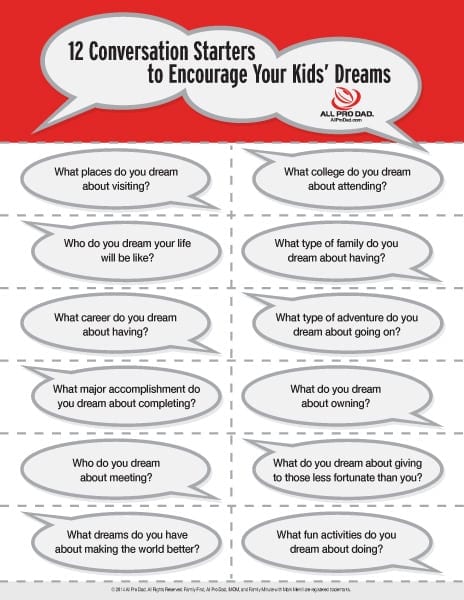
A strategy that helps people and teams adapt in the face of change is called Change Management. When implemented successfully, it helps organizations to achieve their goals while reducing the negative outcomes. This includes training, planning and communications. It is crucial to create a well-integrated, proactive change management strategy. Effective communication is key to the success of your initiatives.
To embed major organizational changes takes time. These can include adding or removing new products, changing the name of services, replacing employees, and introducing or modifying technologies. In addition, there are logistical and financial risks associated with change. No matter what type of change is being implemented, employees can be less affected by an effective strategy. You should plan your approach well and include a roadmap to tackle resistance.
Change management involves defining corporate strategies and procedures, as well as managing people and resources. Structured change management can be used to improve employee morale, reduce disruption and encourage innovation. Employers should collaborate with HR to identify key performance indicator and create a roadmap for change. It is also important to develop a change plan that assesses the impact on systems and processes.

Employee resistance is a common problem during major changes. Employee resistance is a common problem. They may not be willing to adapt, lack skills, or lack the behavioral traits necessary to succeed. It does not matter if there is resistance from within or outside the workplace, it can have a negative impact on productivity. Employers can overcome this resistance by building trust between employees and managers. However, employers should not underestimate how much resistance can occur.
Effective change management requires leaders to actively sponsor the change. To do this, leaders must be clear about why and how the organization will benefit from the change. They should also be open to receiving feedback from their team, and allow for time to reflect before they deliver the message. They should also celebrate the success of a change and set seeds for future change.
Some of the most effective changes are the ones that are easy to implement. Because employees trust their managers' information, this is because they often trust it. Additionally, employees tend to place more emphasis on the big picture than on the details.
It can be difficult to manage changes, especially when they involve many stakeholders or require the involvement from different departments. It is important to establish a guiding coalition in order to achieve a common goal. This will also help to build trust through joint activities. These collaborations can support early successes, and help you deal with resistance.

To spread the word about your changes, as part of a group called a guiding coalition you can use multiple communication channels. To let employees know the change, you can either email them, publish articles on your site, or use social networks. You should also ensure that your messages are consistent with the culture of your organization. By keeping your message simple and consistent, you can quell resistance.
FAQ
What are some good tips to make friends during midlife?
It can be difficult to make friends in middle age, but it is possible. The key is to put yourself out there and take the initiative. These tips will help you get started.
-
Join clubs or take classes that interest you. This is a great way for you to make meaningful connections and meet like-minded people.
-
Reach out to people that you know. Take the initiative to reach out to your old friends, colleagues, and neighbors.
-
Participate in activities, such as volunteering for causes you care about or attending events you are interested in.
-
Join online communities to meet people with similar interests.
-
Ask questions and really listen - when you're talking to someone, ask questions and really listen to the answers. This will help you get to know the other person better.
-
Sharing stories from your personal life can help you bond and foster a deeper level understanding between the two of them.
-
Be open to new opportunities - don't be afraid to try something new and step outside of your comfort zone. This will help you make new friends and meet new people.
-
Be persistent - making friends takes effort. Don't lose heart if it doesn’t happen immediately. Put yourself out there, and eventually you will meet the right people.
What are some other ways I can start a conversation?
Starting a conversation with someone can be intimidating, but there are some simple strategies that can help. Begin by identifying common interests and experiences. This could be anything from discussing current events to talking about hobbies or favorite movies.
It's a great way for people to begin a conversation by asking open-ended question. These are questions that can't be answered with a simple yes or no, and they encourage the other person to share more about themselves.
To start a conversation, you can also use compliments. You can also use compliments to start a conversation. They don't need to be physical.
When you approach someone, make eye contact with them and smile. This will show that you are friendly and approachable, which can make the conversation much easier to start.
Why it is so difficult to make friends in midlife
Friendship in midlife has its challenges. It is quite different to making friends as a child or at college.
The stakes feel higher, and the odds of success more daunting. This requires you to take risks, be vulnerable and accept being uncomfortable.
This means you have to put yourself out there, with no guarantee that anyone will be there. There's nothing worse than cancelling last-minute when your social calendar is already crowded.
Perhaps you just moved, or you are too busy with work and caring for the house to make time for socializing. When you are forced to choose between your self-care, or seemingly irresponsible behavior, it can cause a great deal of guilt.
Then there's the fear that no one likes you or that people are measuring every word you say to evaluate its value as a "friendship." All these factors make it hard to just jump into a group and start talking like we used to in our youth. It's almost as if everyone has their own clique, and we don’t fit in.
Making friends in midlife is a difficult task. It requires courage, serious effort, and determination if we want the world to open up and allow us to form meaningful relationships.
It's possible. One way to start is by getting involved in activities or joining clubs that interest you. This will give you the chance to meet likeminded people and create friendships. You can also attend classes, participate in events, volunteer for causes you care about, or join online communities that allow you to connect with others who share your interests.
Making friends in midlife can be done by reaching out and making new acquaintances. Perhaps there is a neighbor you like, or a former friend you missed in high school. It can be daunting to take the initiative, but it will open doors to new friendships and possibilities.
What are some tips to keep your midlife friendships strong?
Once you've made new friends in midlife, it's important to maintain those relationships. Here are some tips to help you do this:
-
Take time to be with friends. Make sure you make time to get together and share what's happening in your lives.
-
Do not forget to show your appreciation for your friends and their time spent together.
-
Open and honest - share your feelings with others and be open about them.
-
Listen to one another - listen carefully to your friends' opinions and ask questions.
-
Be supportive. Help your friends in times of need.
-
Plan together - make plans to go out for dinner or see a movie together.
-
Respect eachother's boundaries.
-
Respect their opinions - even if you don't agree with your friends, respect their opinions and be open to different points of view.
-
Be understanding. Understand your friends' struggles and don’t judge them.
-
Have fun. Make sure you have fun.
-
Be sure to communicate regularly - even though you may not be able see each other face to face, it is important to maintain contact via phone calls or emails.
-
Celebrate special occasions. Spend some time celebrating with your friends their birthdays,anniversaries, and other memorable occasions.
-
Be open about your limitations - If you are unable to do something, tell the truth and don't promise anything you won't keep.
-
Offer to Help - If your friend's going through a tough time, offer to support them in any way that you can.
-
Do not be afraid to disagree. It's fine to disagree with friends. But, please do it respectfully and without judgement.
-
Be patient - remember that relationships take time to develop and don't expect too much too soon.
-
Take time to care for yourself.
-
Understand that life changes can affect friendships.
-
Offer advice to friends who ask. Be honest and supportive. Remember that your friend is in control of their own life.
-
Respect their privacy. Do not share their private details without their permission.
-
Do not gossip - Avoid talking behind your friends' backs about them and do not spread rumors about them.
When to Use Pick Up Lines for Flirting?
Pickup lines are a fun way to break the ice and spark conversations when trying to flirt with someone. They can be fun and a great way for someone to get to know you. Pickup lines should not be used often, as they can become too sexy and offensive.
Pick-up lines should only be used when the other person is already showing signs that they are open to conversation and flirting. A pickup line should be used right after you have made eye contact. This is a sign that there is interest between you.
Do not use too sexualized pickup line phrases. These may be seen as aggressive or crude. Instead, you can use funny compliments that will make your target feel relaxed and show your flirty side. Remember to not push your target if they don't want it. Respect their boundaries. Don't be too persistent.
Look at some of today's most popular pickup lines to see which one suits you best in different situations. Mixing and matching different components can create unique combinations which may help show your creativity and make the other person feel special.
When it comes to body language, smiling often during conversations and physical contact can help you show your attraction. Just make sure not to move too quickly so that you don't scare away any potential partners! Remember that confidence is the key to having a conversation with someone new. Keep your head up and believe in yourself.
What words can you use to seduce a girl
Flirting is all about confidence, personality, and charm. Flirting is about more than the words you use. It's about how you make her feel.
If your goal is to get her attention, you need to be witty and playful while making sure not to make things too intense - focus on smiles, thoughtful compliments, and light-hearted conversations to break the ice.
Puns and clever innuendo can be a great way to show your humor. They also give off subtle signals that may indicate an interest in getting closer.
It's important to ensure that both of you are comfortable in any situation. Don't rush things and keep things natural. Sincerity and kindness are sure to bring out the best and will create a positive energy in your relationship that will last forever.
What topics could you use to keep the conversation going in your community?
Talking about topics that you both can relate is the best way for a conversation to continue. Ask questions about their hobbies and interests, or talk about current events. If you don't have any ideas, you might try asking them "What was the last book that you read?" or "What did you think of the new movie everyone's talking about?"
If you can find something that both of you are passionate about, the conversation will flow naturally and be much more enjoyable. Also, you could ask open-ended question that allows your conversational companion to share an opinion or a story.
Also, you could talk about shared experiences. You might also consider asking your conversation partner questions about their lives, such as where they were born, their family, and what their dream job would be.
Remember to bring humor to the conversation. Funny stories and jokes can help to lighten the mood, and allow you both to have more fun and open communication.
Statistics
External Links
How To
How do you tell if your pick-up lines are working?
"Is this seat taken?" You know a pick-up line is working if it sparks a conversation. If the answer is positive, for instance, if they offer their seat or laugh with you, you can assess the situation to decide how to continue the discussion.
Conversely, if your pick-up phone response is met with crickets, or less enthusiasm, you should immediately alter your strategy and try a different type conversation starter. Don't be discouraged--remember that even "no's" can turn into "yeses!" Be open to listening, being playful and vulnerable as you get to know someone. Always remember that connection is the ultimate goal.
It might be time for you to move on if you don't get a reply. You shouldn't take it personal. Everybody is different. Some people don't like pick-up lines. Instead, find someone who will listen to you.
Finally, remember that the best conversations come from genuine interest and curiosity. Ask the other person open-ended questions, and be willing to share something about you. This will help to create a connection beyond the pickup line.